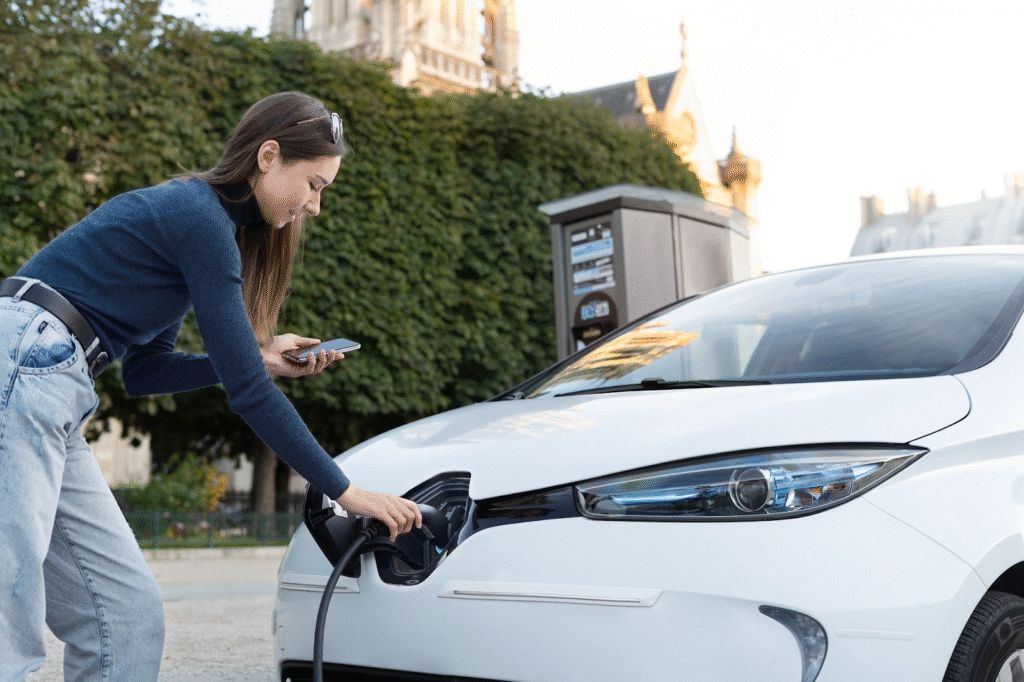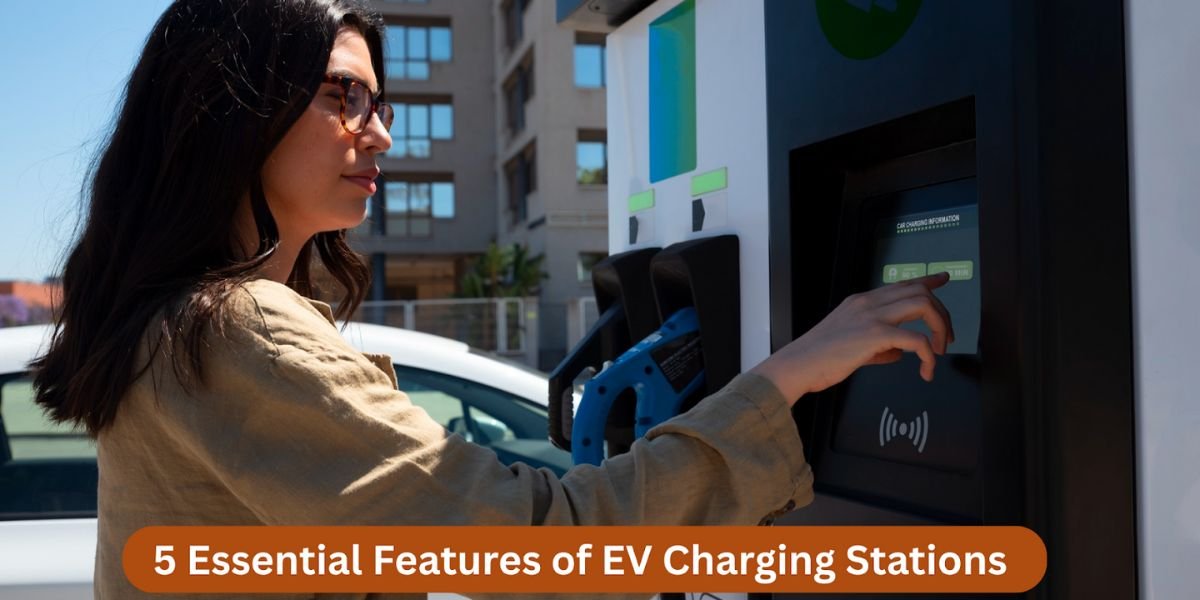The shift to electric vehicles is more than a trend—it’s a transformation in how we move, live, and connect with our environment. As EV adoption evolves, charging stations aren’t just plug-in points—they’re becoming critical touchpoints in the future of transportation.
With the EV market growing, drivers expect more than just a place to power up their vehicles. They want services that are rapid, practical, dependable, and easy to use. This is where your business can take the lead in meeting the growing demand.
Irrespective of your business goals, ensuring your stations have the best features can give them a real advantage in the market.
Want to know more about such features?
Here are the five essential qualities every EV charging station should offer beyond what is required.
1. Cashless Payments
If you provide electric vehicle charging services, it is prudent to incorporate cashless payments into your system. Since modern drivers are tech-savvy, offering them a streamlined experience starts with payment.
Offering payment through contactless credit/debit cards, mobile wallets, RFID cards, and other cashless methods can guarantee both speed and convenience for your customers.
The key feature of a kiosk or media device solution is the 1-to-many ability. That means a single terminal can serve a number of charging stations in one location.
It results in cost savings in hardware, maintenance is made easier, and throughput is increased. In addition, drivers do not require subscriptions or accounts to manage, and can just tap and pay, in contrast to subscription-based systems.
Furthermore, working with an established EV charging solutions provider will guarantee the seamless deployment of these systems. In turn, they will be fully compliant and scalable, allowing CPOs to concentrate on expansion while providing a modern, reliable, and user-friendly EV charging experience.
Overall, integrating such features will enhance driver satisfaction and relieve you of the burden of maintenance and cash management. It will also improve perception of your business as an innovative and customer-focused brand.
2. Remote Monitoring and Reporting
The ability to monitor stations remotely is one of the most useful tools for charging point operators (CPOs).
In this context, cloud-based dashboards give real-time information on the activity of each station, such as history of transactions, revenue, and usage patterns. It enables operators to monitor peak hours, streamline operations, and identify poorly performing or troublesome stations without needing to visit each station.
The remote monitoring is also useful in predictive maintenance as it indicates the possible problems before they can impact the user.
In the case of CPOs dealing with numerous locations, this feature minimizes operational expenses and enhances efficiency. Moreover, the extensive reporting helps in making strategic decisions, such as station expansion, price changes, or advertising.
With these insights, operators will be able to achieve maximum uptime, optimise profit, and offer an overall positive experience to EV drivers on their network.
3. Secure Transactions
The primary concern for both operators and drivers in the EV charging ecosystem is security. That said, a PCI-compliant payment system guarantees that all transactions are carried out securely, and the sensitive data of cardholders will not be exposed to fraud or data breaches.
This adherence to it is especially significant, given the increasing use of cashless and contactless payments. In the case of CPOs, secure transactions help build trust among drivers, thereby boosting their reputation and reliability on the market.
Operators are also able to reduce the potential liability or financial loss that may have been caused by unauthorized access. Furthermore, additional levels of security are also offered, including encryption, tokenization, and system fraud detection.
The result?
CPOs can focus on the efficiency of their operations and customer satisfaction. After all, their revenue stream will not be impacted by the risks associated with unsecured transactions, as they will be protected.
4. Easy and Scalable Integration
EV charging networks are also dependent on scalability, as demand continues to increase. With this, you can upgrade your stations or extend capacity through solutions built to seamlessly integrate with existing hardware, requiring minimal upgrades or downtime.
The compatibility with other charging points is easy, which simplifies the maintenance of multiple systems. As a result, within a short time, operators are able to introduce new payment terminals, kiosks, or monitoring devices on multiple sites.
It leads to quick network growth. Also, scalable systems can be future-proofed to support forthcoming technology or increased transaction volumes.
That’s not all. CPOs are able to maximize investments, simplify deployment, and expand their network according to market needs by using flexible and modular solutions.
It will not only provide operational efficiency but also deliver a uniform and stable experience to EV drivers when using the network.
5. Convenience and Satisfaction to the Customer

To attract and retain EV drivers, it is essential to provide a seamless charging experience. In this context, cashless payment systems that do not require the use of apps or accounts will eliminate barriers, allowing drivers to begin charging with just a simple contactless payment.
This convenience saves time on waiting and makes it easier to use the station. It also makes the experience of the users more enjoyable. That said, customers are more prone to revisit stations that are convenient to use, which leads to loyalty and recurrent revenue.
Moreover, this streamlined process makes the station have a better image, making it user-friendly and up-to-date. Therefore, ensuring customer convenience is not only a cause of higher adoption rates but also a source of positive word-of-mouth.
It even promotes the network beyond an EV competitive market. Ultimately, smooth payment systems are central to a successful operation and future expansion.
Conclusion
The future of EV charging is not just about delivering power—it’s about delivering confidence, speed, and simplicity to every driver who pulls into your station.
By embracing features such as cashless payments, remote monitoring, secure transactions, seamless scalability, and user-focused convenience, charging point operators can stay ahead in a market that values efficiency as much as sustainability. Each of these essentials transforms your station from a basic utility into a trusted destination.
Hence, the businesses that thrive will be those that don’t just meet expectations but redefine them—powering not only vehicles but also the future of mobility itself.













